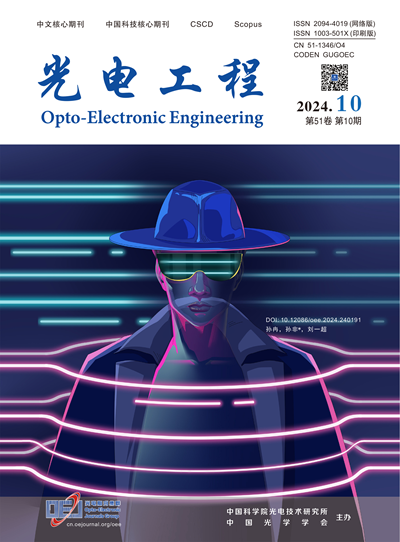Design and manufacture of Φ1.05 m lightweight mirror
Q3 Engineering
引用次数: 1
Abstract
In terms of the strict design requirements of Ф1.05 m primary mirrors for space optical systems, a new method of structural optimization design of lightweight mirrors is proposed, and a platform for automatic simulation analysis and optimization design of mirror structures are established. The primary mirror design with excellent per-formances is determined based on that platform. The primary mirror weighs less than 50 kg, and the lightweight ratio is close to the foreign advanced level. The first mode frequency of the primary mirror under the support of three spherical hinges is 361.2 Hz, and the first-order non-zero free modal frequency is 501.9 Hz. Under the uniform temperature change of 1 ℃, the surface figures with defocus and without defocus are 0.55 nm RMS and 0.10 nm RMS, respectively. The maximum stress of the primary mirror under 30g overload acceleration is 16.1 MPa. All of these performances meet the design requirements. The most advanced third-generation large-aperture mirror processing technology is adopted, and the route is ultra-precision milling, CNC grinding and polishing of small grinding head, and ion beam finishing. In order to ensure the consistency of surface shape test results no matter in the space or on the ground, the gravity unloading technology, and surface shape error data post-processing technology are developed to eliminate the influence of gravity and other systematic errors. The final surface shape accuracy of the primary mirror reaches 0.011 λ RMS, which shows a high precision optical surface and demonstrates the rationality of the scheme.Φ1.05 m轻量化镜面的设计与制造
针对空间光学系统对Ф1.05 m主镜的严格设计要求,提出了一种轻量化主镜结构优化设计的新方法,建立了反射镜结构自动仿真分析与优化设计平台。在此基础上确定了性能优良的主镜设计方案。主镜重量小于50公斤,轻量化比接近国外先进水平。三球面铰链支撑下主镜的一阶模态频率为361.2 Hz,一阶非零自由模态频率为501.9 Hz。在1℃的均匀温度变化下,散焦和未散焦的表面图像RMS分别为0.55 nm和0.10 nm。主镜在30g过载加速度下的最大应力为16.1 MPa。各项性能均达到设计要求。采用最先进的第三代大孔径镜面加工技术,路线为超精密铣削,小磨头数控磨削抛光,离子束精加工。为了保证地表形状试验结果在空间和地面上的一致性,开发了重力卸载技术和地表形状误差数据后处理技术,以消除重力等系统误差的影响。主镜的最终面形精度达到0.011 λ RMS,显示出高精度的光学面形,验证了方案的合理性。
本文章由计算机程序翻译,如有差异,请以英文原文为准。
求助全文
约1分钟内获得全文
求助全文
来源期刊

光电工程
Engineering-Electrical and Electronic Engineering
CiteScore
2.00
自引率
0.00%
发文量
6622
期刊介绍:
Founded in 1974, Opto-Electronic Engineering is an academic journal under the supervision of the Chinese Academy of Sciences and co-sponsored by the Institute of Optoelectronic Technology of the Chinese Academy of Sciences (IOTC) and the Optical Society of China (OSC). It is a core journal in Chinese and a core journal in Chinese science and technology, and it is included in domestic and international databases, such as Scopus, CA, CSCD, CNKI, and Wanfang.
Opto-Electronic Engineering is a peer-reviewed journal with subject areas including not only the basic disciplines of optics and electricity, but also engineering research and engineering applications. Optoelectronic Engineering mainly publishes scientific research progress, original results and reviews in the field of optoelectronics, and publishes related topics for hot issues and frontier subjects.
The main directions of the journal include:
- Optical design and optical engineering
- Photovoltaic technology and applications
- Lasers, optical fibres and communications
- Optical materials and photonic devices
- Optical Signal Processing
 求助内容:
求助内容: 应助结果提醒方式:
应助结果提醒方式:


